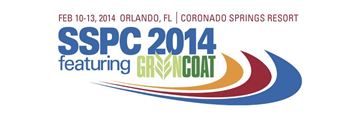Search
Products tagged with 'protective coatings'
View as
Sort by
Display
per page
TM0174-1991, Laboratory Methods for the Evaluation of Protective Coatings Used as Lining Materials In Immersion Service
Product Number:
53021-HD1991
Publication Date:
1991
$179.00
TM0174-HD1996-SG Laboratory Methods for the Evaluation of Protective Coatings and Lining Materials in Immersion Service-HD1996
Product Number:
21206-HD1996
Publication Date:
1996
$179.00
TM0184-1988, Accelerated Test Procedures for Screeening Atmospheric Surface Coating Systems for Offshore Platforms and Equipment
Product Number:
53049-HD1988
Publication Date:
1988
$179.00
TM0186-1989, Holiday Detection of Internal Tubing Coatings of 10 to 30 Mils (0.25 to 0.76 mm) Dry Film Thickness
Product Number:
53057-HD1989
Publication Date:
1989
$179.00
TM0186-HD1994-SG Holiday Detection of Internal Tubular Coatings of 250 to 760 μm (10 to 30 mils) Dry-Film Thickness"-HD1994
Product Number:
21218-HD1994
Publication Date:
1994
$179.00
TM0187-HD1998-SG Evaluating Elastomeric Materials in Sour Gas Environments-HD1998
Product Number:
21220-HD1998
ISBN:
1-57590-056-4
Publication Date:
1998
$179.00
TM0192-HD1998-SG Evaluating Elastomeric Materials in Carbon Dioxide Decompression Environments-HD1998
Product Number:
21222-HD1998
ISBN:
1-57590-055-6
Publication Date:
1998
$179.00
TM-03-75-HD1975-SG, Abrasion Resistance Testing of Thin Film Baked Coatings and Linings Using the Falling Sand Method-HD1975
Product Number:
TM-03-75-HD1975
Publication Date:
1975
$179.00
TM0384-HD1994-SG Holiday Detection of Internal Tubular Coatings of Less Than 250 μm (10 mils) Dry-Film Thickness-HD1994
Product Number:
21216-HD1994
Publication Date:
1994
$179.00
TM0404-2004-SG, Offshore Platform Atmospheric and Splash Zone New C
Product Number:
21246-SG
ISBN:
1-57590-195-1
Publication Date:
2004
$109.00
Two Coat Inorganic Coatings System for Corrosion Resistance and Long-Life
Product Number:
51324-21092-SG
Publication Date:
2024
$40.00
Waterborne Coatings with Increased Cross Link Performance
Product Number:
41214-845-SG
Publication Date:
2014
$20.00












